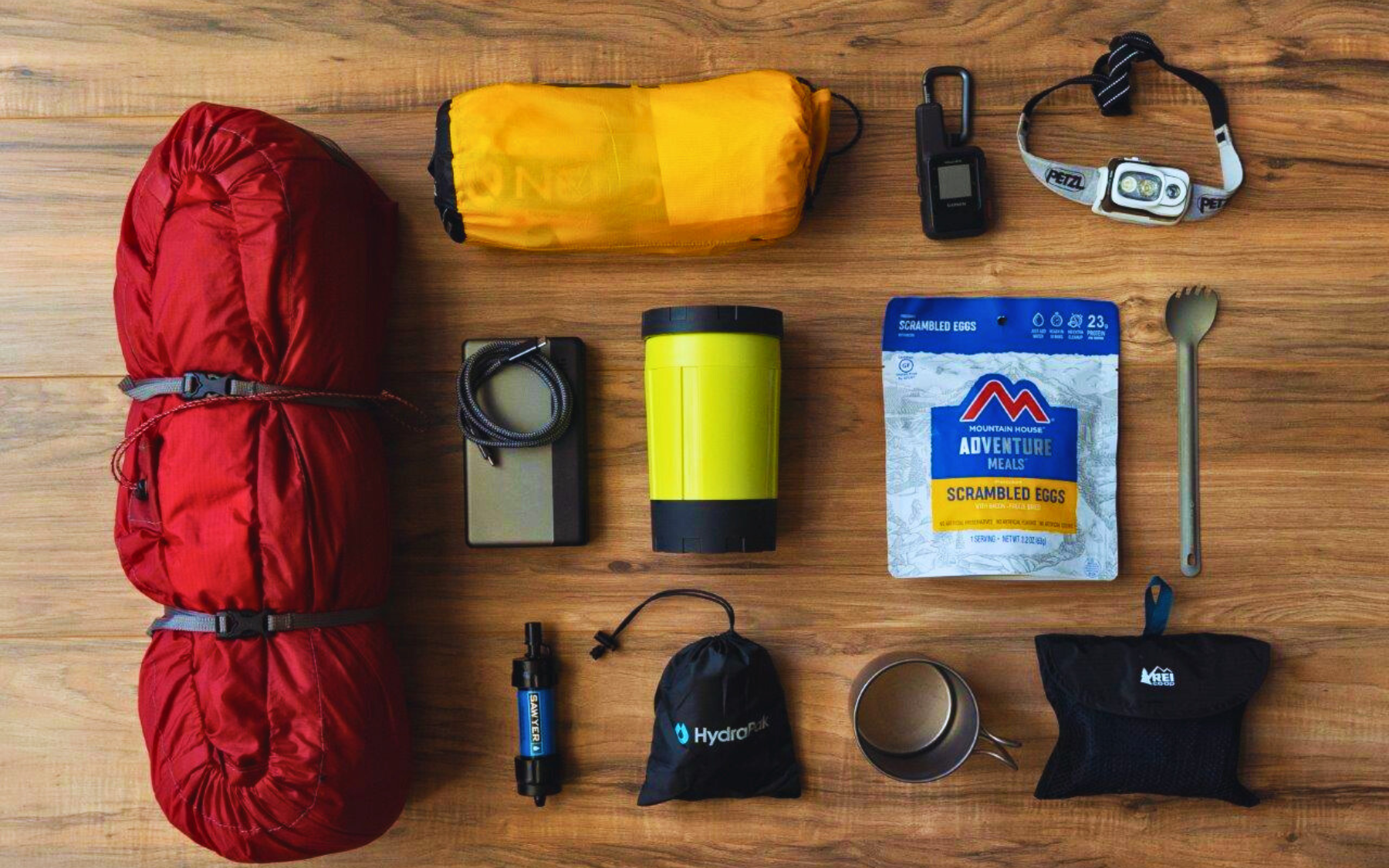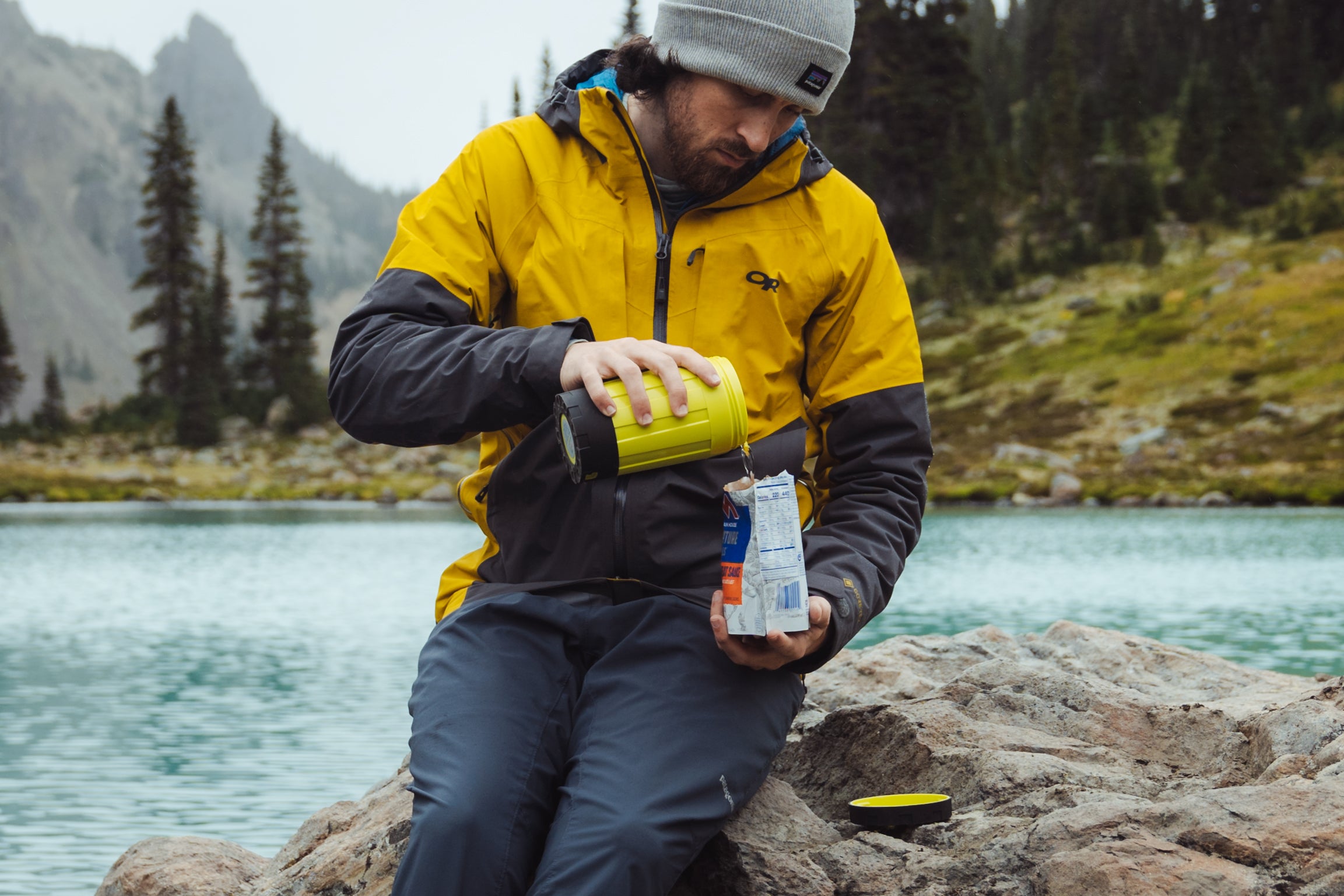10 Facts About Wildfires: Causes, Effects, & Prevention in 2022

On average, about 7 million acres burn each year — just in the US. Not only does this impact millions of people and homes, but it also devastates our precious forests and the wildlife that inhabits them.
In 2021, one forest fire hit too close to home. This was the Caldor fire that spread across the South Lake Tahoe region. In fact, it was California's 15th largest (recorded) wildfire ever. What caused the fire was the reckless use of illegal firearms, committed by a father and his son. Meaning, this tragedy could have easily been prevented.
The Caldor fire ripped through almost 223 thousand acres, including over 1,000 homes and structures. In addition, parts of the Desolation Wilderness were affected — one of our most treasured backpacking locations, and where EcoSimmer was devised.
A key takeaway from this somber story is that a great majority of wildfires can be prevented. By practicing safety and responsibility in the backcountry, we can preserve our landscapes for future generations to enjoy.
Wildfire Facts: Causes, Effects, and How We Can Prevent Them
Becoming more informed about wildfires serves as a stepping stone for integrating responsible practices in the outdoors. To help with this, we shortlisted interesting facts involving wildfire causes, effects, and prevention.
Causes

1. Humans are at fault for about 85% of US fires
Unattended campfires account for a great deal of human-induced wildfires. We get it — there's nothing more nostalgic than a fireside s'more paired with spooky stories. But campfires should be used sparingly and with utmost caution. Whenever possible, go flameless.
Additional forest fire igniters include carelessly discarded cigarettes, equipment malfunctions, and even intentional arson. On the other hand, lightning is the main cause of most naturally-occurring wildfires.
2. 2020 was one of the worst wildfire seasons in US history
About 9,900 separate fires contributed to California's worst recorded wildfire season in 2020. One of particular notoriety is the El Dorado Fire, which burned for over 2 months, taking down almost 23 thousand acres and 1 firefighter with it. It all started with a malfunctioning smoke-generating device at a gender reveal party.
All in all, about 4.3 million acres burned in California that season — over 2x the previous record. With it burned 10.4 thousand homes, and 33 lives were lost. About 60% of California's fires in 2020 were caused by humans.

3. Wildfire seasons are getting longer and more extreme
While the number of annual forest fires hasn't shown a particular pattern over the past 20 years, the duration and devastation caused by them certainly has. Since 2000, an average of about 7 million acres burned in wildfires — this is double what it was in the 90s. Even worse, that number is quadruple what it was 40 years ago, so you can see where this is going.
According to the United Nations Environment Program (UNEP), the global number of severe wildfires is expected to rise by 14% by 2030. This is predicted to jump 50% by 2100. Climate change and land-use change concoct a recipe for disaster. The combination creates prolonged seasons of drought and unbalanced ecosystems, which make it harder to keep forest fires contained.
Effects

4. Wildfires are one of the main causes of air pollution
It's no secret that wildfires emit toxic pollutants. These include carbon dioxide, black/brown carbon, hydrocarbons, volatile/semi-volatile organic materials, and nitrogen oxides. The emissions have adverse effects, not only on the quality of the air we breathe but also on the atmosphere and its ozone layer, which can contribute to climate change.
One pollutant is especially troubling — and that's fine particulate matter, known as PM2.5. The 2.5 refers to its size (2.5 microns), which is small enough to enter your bloodstream via your lungs when it's inhaled. The worst part about this is that PM2.5 makes up about 50% of today's air pollution. Just 10 years ago, it was at about 20%.
Another scary fact: in 2021, wildfires spewed 1.76 billion tonnes of carbon into Earth's atmosphere. That's over double the emissions given off by Germany each year.
5. About 1.2 million acres of US woodland burn annually
Some of these acres hold hiking grounds, go-to camping spots, and under-the-radar backcountry escapes. Plus, they host an abundance of plant and animal species that depend on these woodlands for survival.
Also at stake are our National Parks and monuments. For instance, the forest fire in Yosemite National Park (July 2022) burned through almost 18,000 acres while threatening the park's ancient sequoia trees. This incident was caused naturally by lightning. Luckily, the sprinkler systems laid out by firefighters saved the trees from burning.
On the other hand, one forest fire burned through about 7.6 acres of the Roosevelt National Forest in Colorado. This was caused by a man who had an accident with his gas-powered camping stove. It's just not worth threatening irreplaceable landmarks if we can prevent it by taking precautions and using safer outdoor equipment.

6. Reforestation doesn't begin until about 2-4 years after a wildfire
A forest's regrowth process begins in the soil. The soil needs to be naturally restored and able to absorb water before it can support saplings.
The stages of regrowth are as follows:
- Stand Initiation — weeds and wildflowers (ephemerals) begin sprouting from the ashy soil. They germinate and produce seeds quickly, allowing them to survive easily in the barren landscape. Grasses begin to replace the ephemerals, as they are better equipped for periods of drought.
- Stem Exclusion — a number of tree species that can withstand the nutrient-poor soil and unfavorable conditions take over and prevent the smaller plants from regenerating. Some "pioneer tree" species include red cedar and some pine species.
- Understory Reinitiation — as the pioneer trees grow, their canopy creates shade that is no longer favorable for the brush or smaller plant species, as they require consistent sunlight. The trees' fallen needles and leaves evolve into mulch and then to soil which gets richer as the cycle continues.
- Steady State — larger tree species can be supported, now that the soil is nutrient-rich and able to support their growth. When this step is reached, it means the forest is more stable and is transitioning back into a mature forest.
As you can see, reforestation after wildfire is a tedious process, and it can take over 100 years.
7. Wildfire forces wildlife out of their natural habitats
Most animals flee burning woodlands, if possible. This can push panic-stricken creatures into densely-populated suburbs, where they wander in search of a new home.
Those that don't escape the thick smoke in time can experience difficulty breathing, disorientation, injury, or mortality. One incident to reference involves Australia's koalas that were affected during the brushfires of 2020.
Prevention

8. Weather can tell you when to practice extra precaution
The combination of hot, dry, and windy weather provides the ideal setting for wildfires to start. Avoid partaking in activities that involve sparks or flames, such as fireworks or campfires. Even something that seems harmless (i.e., a smoke-generating device for a gender reveal), can ignite an uncontrollable monster.
You can always check online to find out how vulnerable your location is to wildfires. A helpful resource to inform yourself about the US wildfire prognosis is Fire Danger Forcast, organized by the United States Geological Survey (USGS).

9. Wildfire prevention starts at the individual
Since 85% of wildfires are human-induced, we can also work to prevent 85% of fires. Besides larger efforts such as forest and land management, even small acts can contribute to prevention. Forest fire prevention should be a contributed effort made by each individual. The steps required for progress are surprisingly small.
Here are a few wildfire prevention tips, easy enough for anyone to practice:
- Go flameless. Whether you're trekking the backcountry or visiting the park, consider your activities and avoid using an open flame whenever possible. This was our idea when creating EcoSimmer, the first completely battery-powered backpacking stove — you can heat meals and beverages without a single flame.
- Check conditions. As mentioned above, you can always find helpful resources online to tell you exactly what level of wildfire risk you're facing. Also, there are times when fire and flame are not permitted at all, with reasons supporting this — obey the law.
- Use fire responsibly. If the fire risk is low and having a controlled campfire is permitted, still, practice caution. For instance: use a designated firepit, or create a non-flammable barrier surrounding the fire (such as stones). Keep all flammable objects away from the fire. Never leave it unattended. Be sure to drown the fire until it's cold to the touch when you're finished.
- Watch where you park. Vehicles get hot! Keep that in mind when choosing a parking spot, and avoid any flammable organic materials, such as dry grass.
- Keep fire extermination tools handy. If you're backpacking and keeping it light, consider setting up camp near a natural water source if possible. Or, if you have the space and means, bring a small fire extinguisher with you anytime you plan to use fire. Whether it's a campfire at your favorite campground or a BBQ in your backyard.
- Properly dispose of cigarettes. If you're a smoker, put your cigarette out with water so there's no chance that it ignites any dry materials it comes in contact with. Dispose of it in a waste bin, or put it in a safe place until you reach a garbage can. Never toss cigarettes out in the wilderness — for wildfire prevention and the overall cleanliness of our planet.
10. 30 million US homes are at risk by wildfires
That number might include the home of you or your loved ones — which really puts things in perspective. Another way to look at it: that's roughly 21% of all US homes that are vulnerable to wildfire. And about 1.5 million of those homes have a 26% chance of burning in the next 30 years. That's scary!
While we tend to get comfortable in our everyday lives, you just never know when a forest fire could personally impact you. That's why it's vital to use safety measures. Do all that you can to stay informed and protect our beautiful planet and the people and creatures on it.
FAQs About Wildfires

How does using EcoSimmer backpacking stove help prevent wildfires?
Unlike most backpacking stoves, Ecosimmer is battery-powered and flame-free. Most camping stoves require a combination of fuel (propane or butane) and flame.
While the fire produced by these is contained and generally safe in some conditions, it's not the best option for every situation. However, EcoSimmer backpacking stove's flameless design makes it ideal for all types of weather conditions.
Opting for EcoSimmer over a traditional camping stove eliminates the need for fire in the backcountry. Each time you use it, you are preventing 1 less flame from potentially threatening the wilderness.
You just plug it into a battery and turn it on, and it will only heat up to the boiling point. When this is reached, it shuts off automatically. It also detects if the water level is too low causing it to heat up too quickly. If so, EcoSimmer will instantly shut off until the water level and temp is regulated.
What are the different types of forest fires?
There are 3 major types of forest fires: ground fires, surface fires, and crown fires. These vary in how and where they burn. To break it down:
- Ground fires — also referred to as subsurface fires. These burn through root systems and other living or dead ground vegetation that is dry enough. These aren't always the easiest to put out, since much of the burning takes place deep underneath the soil. Sometimes ground fires linger until conditions are just right, and then set off a much larger forest fire.
- Surface fires — burning through a mixture of dried leaves, fallen branches, and other forms of surface litter, it's the easiest fire to extinguish.
- Crown fires — these are the most intense wildfires that consume entire trees from top to bottom. Once a crown fire has developed, it's the most difficult to contain.
Where do wildfires happen?
They can occur anywhere — however, wildfires occur most often in dry, wooded locations. In the US, the west coast faces the highest number of extreme wildfires. Fires also frequent other US regions. But the west's landscapes provide super dry pine needles and shrubs that feed fire the fuel it needs to advance.
To give you an idea, here are 2021's top 5 states with the highest wildfire exposure:
Are forest fires good for the environment?
They can be, but humans' impact on the planet significantly changes the circumstances. If we take a time machine back to earlier days, before any major human development, wildfires were not such a threat. In fact, our ecosystems used wildfire to regulate and regenerate.
Now, step out of the time machine and back in today's world. Our land use is expanded and we're facing very different conditions due to climate change. So the smaller, natural fires that used to clean out organic waste now have the means to grow to out-of-control catastrophes.
Longer series of drought, warmer conditions, and the threat of certain human activities have led to wildfire seasons that extend far past the "healthy" zone.
How do I find out about wildfires near me?
The best way to stay informed is to check regularly online — a simple Google search will do. For a more advanced outlook, we recommend the US Forest Service's Interactive Fire Map. You can even download the app for up-to-date information on the go. This site also provides articles and social posts covering the most current news concerning wildfires.




